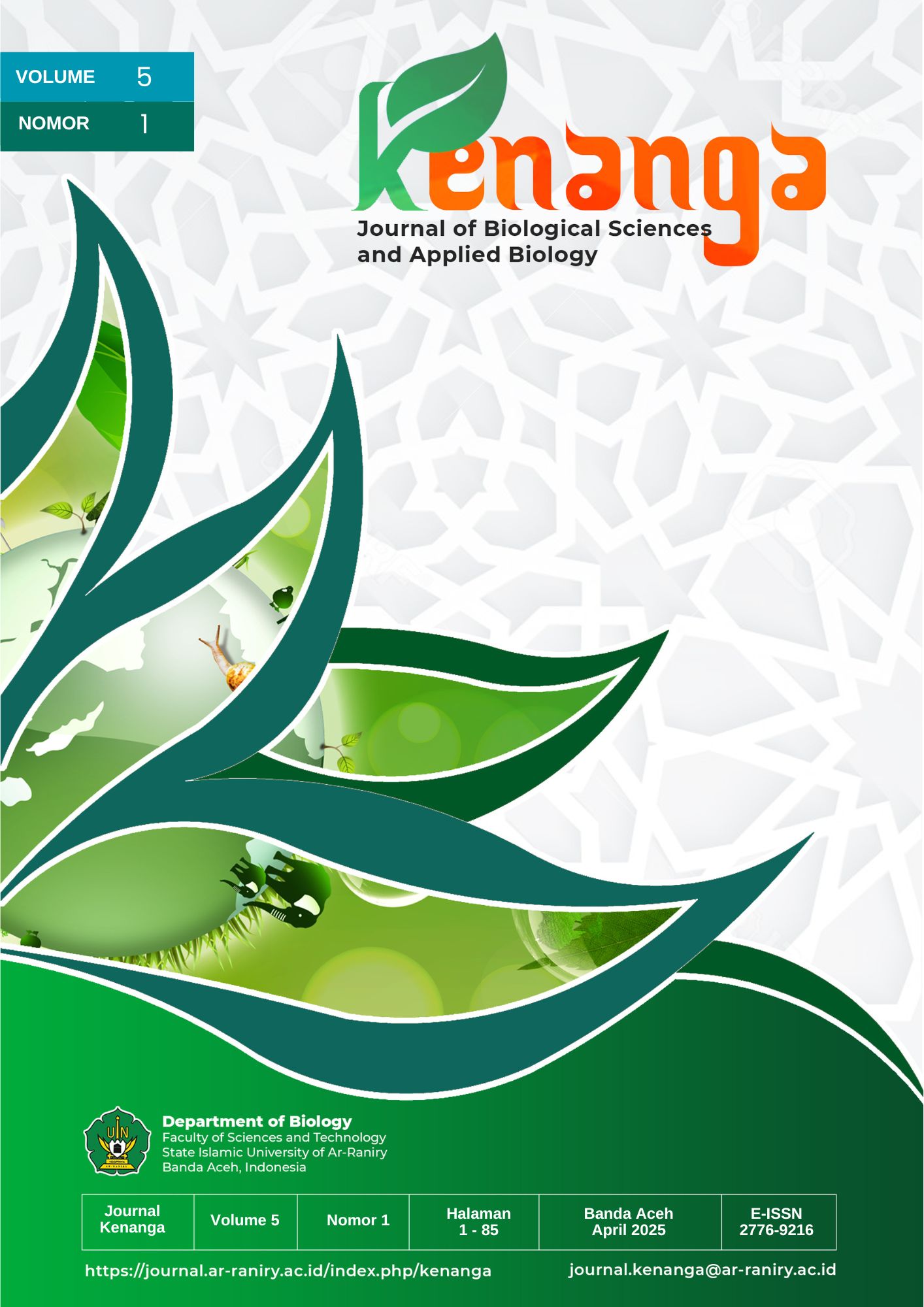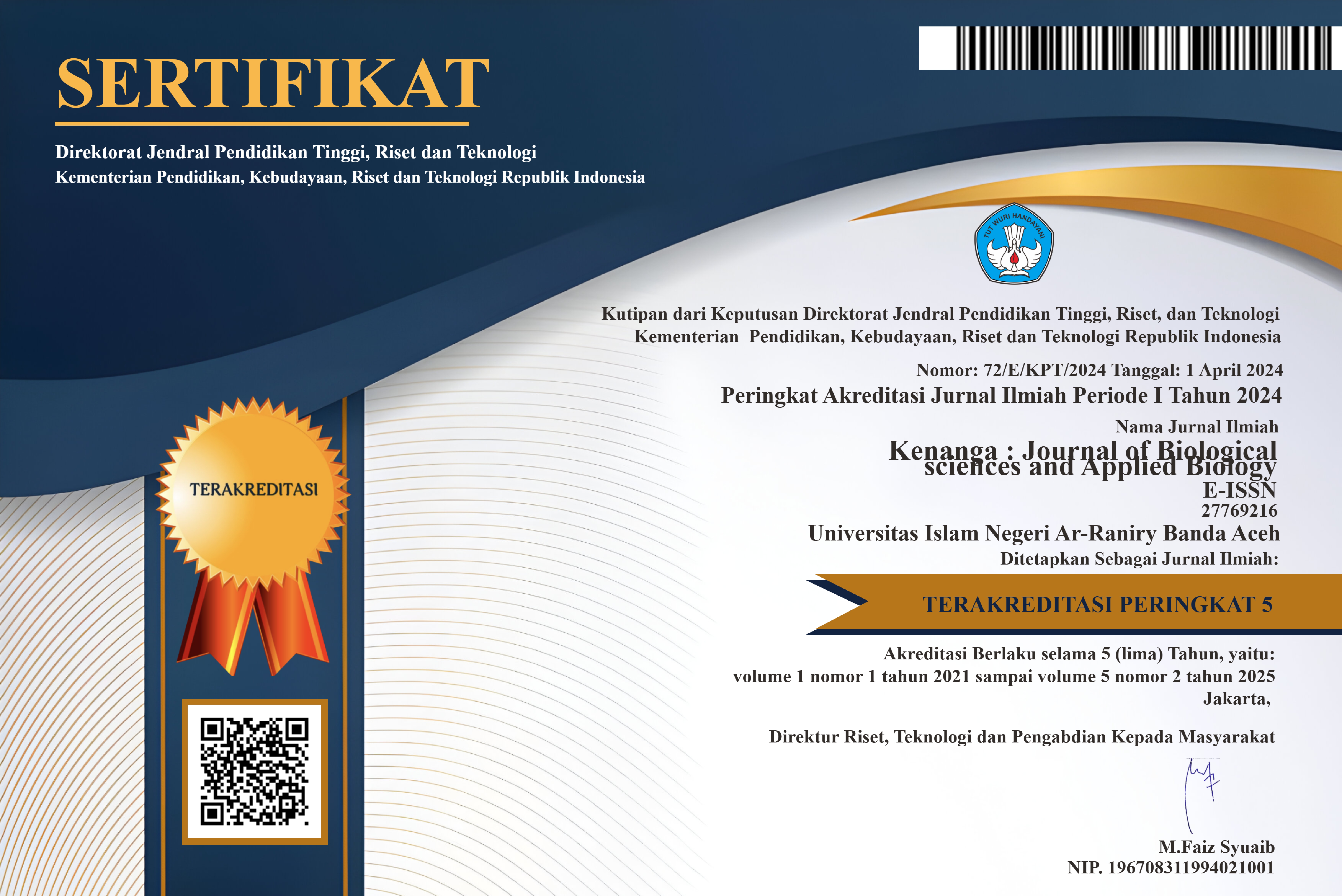POTENSI KEBERADAAN ORANGUTAN DI HUTAN GAMBUT RAWA TRIPA - ANALISIS SARANG DAN POHON PAKAN
Abstract
The orangutan, a vital component of the rainforest ecosystem, is increasingly threatened by habitat loss and fragmentation. Identifying orangutan nests and feeding trees is an important elements in understanding the habitat's capacity to sustain this species. Using the transect method, this study was conducted on 40 grids out of a total of 623 grids in the Tripa area that are still covered by forest. This study aimed to record the presence of orangutan nests and identify various plant species that serve as food sources for orangutans. The result revealed the discovery of orangutan nests in 7 locations, most of which were categorized as type C (old) and type D (very old). A total of 13 potential orangutan food plant species were found in the Rawa Tripa forest area, consisting of the families Moraceae, Euphorbiaceae, Annonaceae, Myrtaceae, Myristicaceae, Apocynaceae, Piperaceae, Dipterocarpaceae, Urticaceae, and Pandanaceae. This suggest that these areas may have supported a significant orangutan population in the past, but their current activity appears to be declining. The findings underscore the need for conservation efforts, as the continued survival of orangutans is crucial not only for their species but also for the ecological health of the forests they inhabit.






















